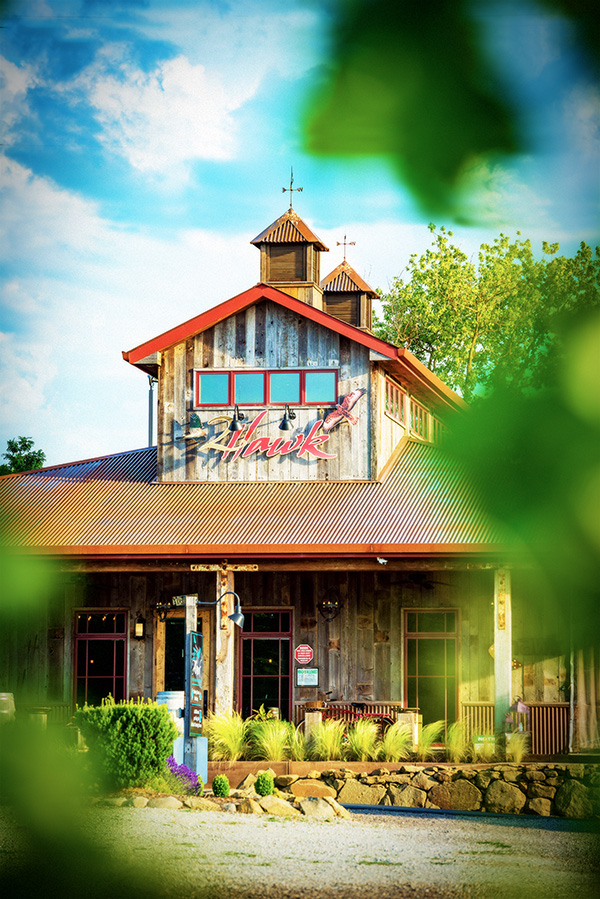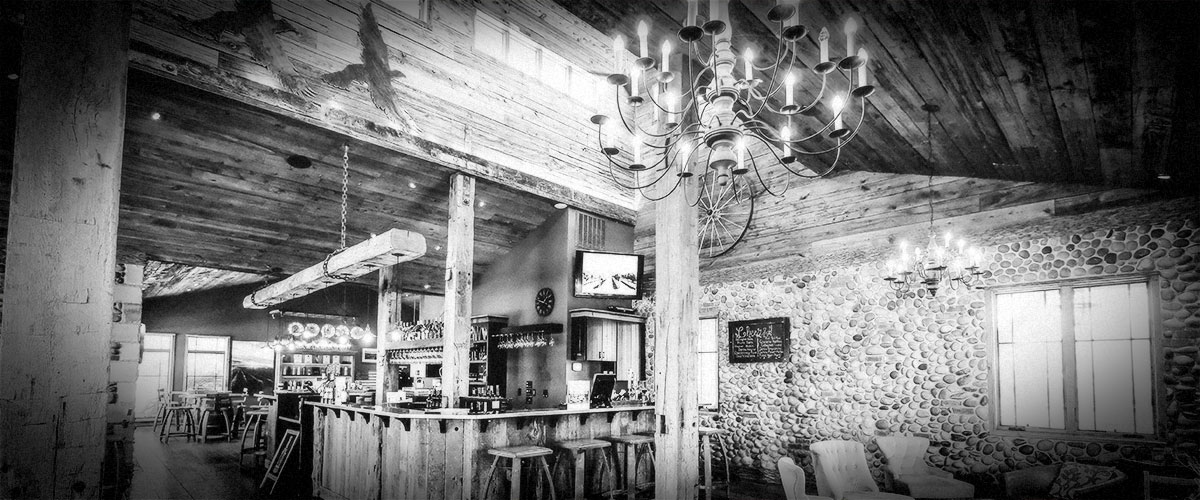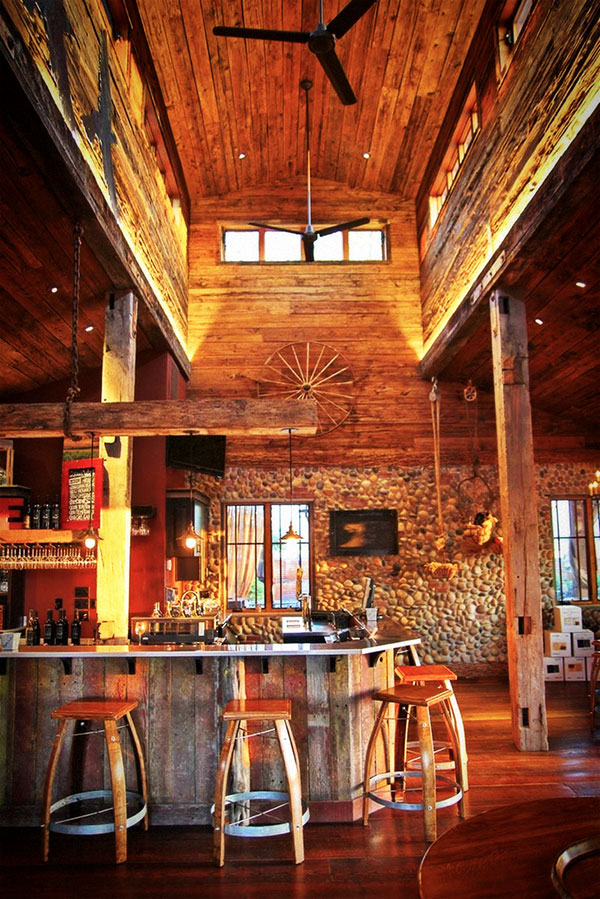Our tasting room was created in an elegantly rustic style embedded with rich character and age. Located on the site of the estate’s original farmhouse, the building was designed and constructed with reverence for the past. Our environmentally friendly tasting room was constructed with reclaimed lumber from across the country—including Wisconsin breweries, Pennsylvania shipyards, and the old Lithia Building in downtown Medford, a local landmark. The following describes the pieces—full of memories and beautiful grains—that ordain the inside and outside of 2Hawk Winery.
 Flooring
Flooring
The Douglas fir flooring was remanufactured using timber reclaimed from the Lithia Motors building in downtown Medford after the landmark was demolished to make way for Lithia Commons.
Ceiling
The ceiling paneling is mushroom board recovered from a mushroom farming operation in Pennsylvania. This eastern hemlock wood was taken from the bottom of the growing trays. The growing process erodes the soft grain from the wood, creating a beautiful and naturally textured patina.
Wall River Rock
All the rock used on the walls was found in the fields where the 2Hawk Vineyard currently stands. For weeks, masons meticulously arranged and applied these stones to the walls, giving the tasting room a cozy, cottage-like feel.
Grapevine Trim & Base
Grapevine trimmings left after our first harvest were artfully arranged and nailed to base/trim boards to create the warm, rustic trim surrounding the room’s interior.
Hand-Hewn Interior Posts
All of the hewn posts are from a barn in Mercer County, Pennsylvania. They are a mix of hickory and white oak. According to a Mercer Historical Society representative, the barn was constructed by General James Pierce in 1860. A prominent member of local society, General Pierce was involved in developing industry in the area. He is also an ancestor of former First Lady Barbara Bush.
Upcycled Barrel Tables & Chairs
It all started with a “good deal” on wine barrels and the need for tables and chairs. Optimizing the most beautiful parts, we placed barrel lids top and center on the tables to reveal their origin and expose the fasteners, steel strapping, and solid wood planking. One barrel provided enough material to create six barstools.
Wine Bottle Chandelier
This 32-bottle chandelier comprises reclaimed planks and a variety of colored wine bottles rescued from local dumpsters (thank you, Jacksonville Inn). Bottles were carefully cleaned, cut, strung with electrical, and lighted with halogen candelabra bulbs.
Hickory Log Pendant Light
Using a gorgeous, naturally aged piece of hickory from Rogue Pacific weighing a hefty 750 pounds, the light is supported by reclaimed “heavy” chain and crossbeams.
Siding on Bar & Interior Cabinetry
This material was recovered from several horse corrals in the vicinity of Fort Klamath in Klamath County. The corrals were originally built in the 1940s using trees as side posts, which were painted red. Over the years, lichens formed, giving the wood a mature, organic feel.
Doors
All the doors at 2Hawk were purchased new as seconds due to imperfections. They were then distressed even more until they exhibited an old weathered look. Various aging techniques and stains were used to give each door its own distinctive style.
Exterior Porch Posts & Beams
These posts and headers are longleaf yellow pine recovered from a Milwaukee, Wisconsin, brewery built in 1867. This timber was the premier wood used in construction during the industrial boom after the Civil War and until the forests were nearly depleted in the 1930s.
Exterior/Interior Trim & Beam Wraps
This material came from a wooden granary located in the Cowhead Valley of Northeastern California. The granary was built in the late 1930s using local pine. The structure sat abandoned for decades as ranchers no longer raise grain in that area.
Reused Cupolas
The two round cupolas were taken from a grocery store in Ohio, hailing from the early 1900s. The finial atop the middle cupola was originally handcrafted in the late 1800s and relocated from Pennsylvania.
Exterior Soffit
The Douglas fir soffit material was recovered from a mill demolition in Klamath Falls, Oregon. Located on Crosby Street, the mill site was constructed in 1926. It was originally called the Circle D.E. Sawmill.


